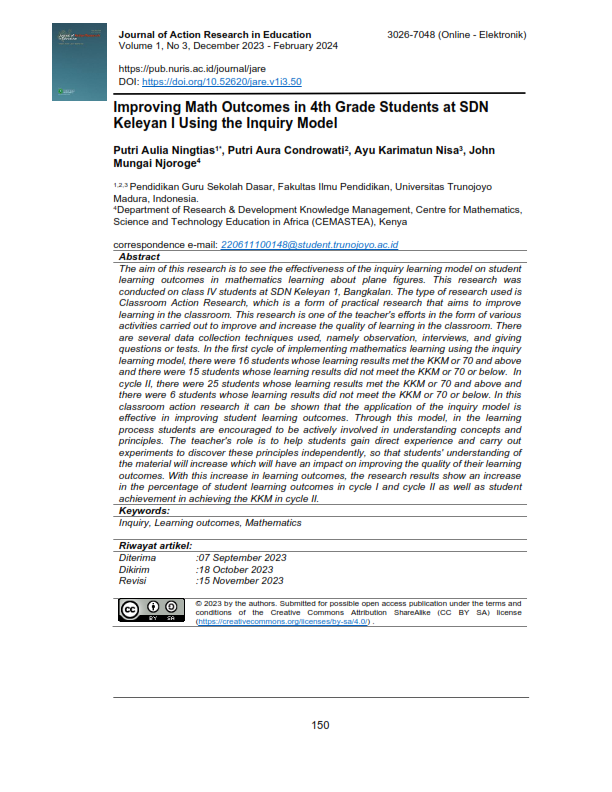Improving Math Outcomes in 4th Grade Students at SDN Keleyan I Using the Inquiry Model
DOI:
https://doi.org/10.52620/jare.v1i3.50Keywords:
Inquiry, Learning outcomes, MathematicsAbstract
The aim of this research is to see the effectiveness of the inquiry learning model on student learning outcomes in mathematics learning about plane figures. This research was conducted on class IV students at SDN Keleyan 1, Bangkalan. The type of research used is Classroom Action Research, which is a form of practical research that aims to improve learning in the classroom. This research is one of the teacher's efforts in the form of various activities carried out to improve and increase the quality of learning in the classroom. There are several data collection techniques used, namely observation, interviews, and giving questions or tests. In the first cycle of implementing mathematics learning using the inquiry learning model, there were 16 students whose learning results met the KKM or 70 and above and there were 15 students whose learning results did not meet the KKM or 70 or below. In cycle II, there were 25 students whose learning results met the KKM or 70 and above and there were 6 students whose learning results did not meet the KKM or 70 or below. In this classroom action research it can be shown that the application of the inquiry model is effective in improving student learning outcomes. Through this model, in the learning process students are encouraged to be actively involved in understanding concepts and principles. The teacher's role is to help students gain direct experience and carry out experiments to discover these principles independently, so that students' understanding of the material will increase which will have an impact on improving the quality of their learning outcomes. With this increase in learning outcomes, the research results show an increase in the percentage of student learning outcomes in cycle I and cycle II as well as student achievement in achieving the KKM in cycle II.




